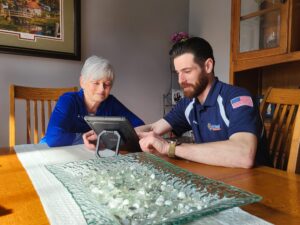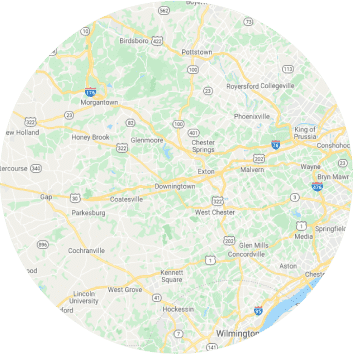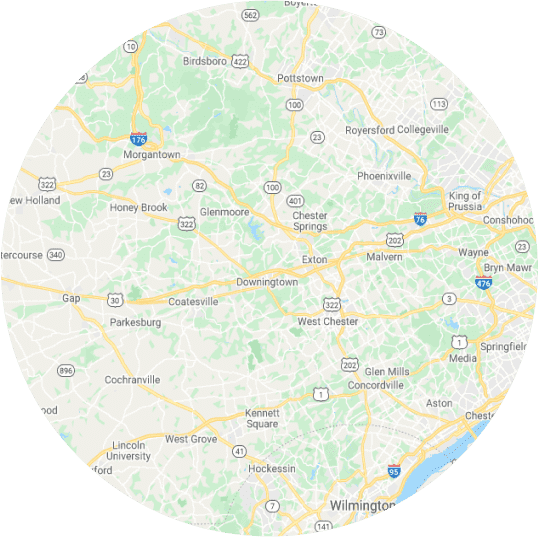Single-Stage vs. Two-Stage vs. Variable-Speed Air Conditioners: Pros & Cons

There are some clear advantages and disadvantages of each air conditioner system. Before making your purchase, learn about the differences in comfort, energy usage, and longevity between each system.
Read Time: 8 mins.
Last Revised: 3/13/24
As temperatures rise, we can find ourselves trapped in an air conditioning tug-of-war between our utility bills and the comfort of our home.
Fortunately, air conditioners are continually being equipped with new efficiency features that allow us to cool off without breaking the bank.
In this ever-evolving landscape of air conditioning technology, however, one thing remains true: the number of speeds, or stages, your AC unit is capable of running at is among the main factors in the overall efficiency levels.
Single-Stage, Two-Stage and Variable-Speed air conditioners are the three different types of units that we have the option of installing into our homes. Understanding the benefits and drawbacks of each system is key when making any air conditioner replacement.
At Mattioni, we take pride in providing quality air conditioner installations. However, before an installation happens, our top priority is educating homeowners on all aspects of air conditioning systems so that you can make the right choice for you and your home.
In this article, we’re going to first cover the differences in technology between the three types of systems. We’ll follow that up by diving into pros and cons of each regarding the following considerations:
- Comfort Level
- Energy Usage
- System Longevity
Differences Between Single-Stage and Two-Stage Air Conditioners
As their names imply, the principal difference between these two types of systems is that a single-stage air conditioner operates at one speed only, while a two-stage unit can operate at two.
A single-stage air conditioner will either run at 100% or completely shut off, while a two-stage has the additional option to run at a 60%-70% capacity.
Let’s say you set your thermostat to cool your home with a single-stage AC unit. The system will turn on to 100% capacity to achieve the set temperature, and then turn off completely after doing so. Whereas a two-stage can decide to operate at roughly 65% or 100% capacity based on how much cooling is needed.
Differences Between Two-Stage and Variable-Speed Air Conditioners
Variable-speed air conditioners are unique in that they can run at virtually any speed between 30% and 100% to provide the most energy-efficient method to meet the thermostat temperature.
This type of unit automatically selects which capacity to run at after reading the indoor and outdoor temperatures, indoor and outdoor humidity and the estimated runtime needed to achieve the set temperature.
Variable-speed AC units are the most technologically advanced, which comes with many advantages, and some weaknesses as well.
Single-Stage Air Conditioners: Pros
Quicker to Initially Achieve the Set Temperature
When you set your thermostat to cool your home, a single-stage air conditioner has only one option: turn on completely. You’ll get a blast of cool air in your home followed by the system turning off after the thermostat temperature has been reached.
Is this the best cooling strategy? That depends on your priorities, but one thing is for sure: it’ll cool your home quickly.
Lower Up-Front Costs
Single-stage air conditioners are offered at the lowest price point out of our three options. Prices usually range between $6,000 and $7,000. While other variables, such as the size of your home, impact the final costs of a new system, single-stage units are the most affordable option on the market.
Single-Stage Air Conditioners: Cons
Unsustained Comfort Level
Single-stage systems are the least effective at keeping our home’s temperature close to the thermostat’s setting.
These systems produce a quick drop in temperature as the unit begins to run, however after the thermostat temperature has been reached, the unit turns off and the temperature begins to rise again. This leads to a cycle of temperatures rising and falling, and therefore gaps in our comfort.
While air conditioners are not specifically designed to remove indoor humidity, they do have this effect to some degree when they are running. Due to the limited run-time of single-stage air conditioners, this type of cooling system is also the least effective at dehumidifying our homes.
Altogether, the unstable temperatures and relatively higher humidity levels make homes operating a single-stage air conditioner the least comfortable.
Higher Energy Usage
Air conditioners use the most energy when they turn on, much like how a bike rider has to exert the most force to initially get up to speed. In fact, the startup wattage needed to start up an air conditioner is several hundred watts more than the running wattage.
The number of times an air conditioner must endure one of these on/off sequences is the single biggest factor in determining its energy efficiency.
Single-state air conditioners can’t throttle their capacity, so they experience the most on/off sequences and therefore use the most energy to operate. These systems typically receive between a 14 and 15 SEER2 rating, putting it at the lower end of the scale that ranges from 13 up to 25 as energy efficiency increases.
Decreased Longevity and Fewer System Safety Features
The biggest factor at play in how long any cooling system will last is its installation quality and maintenance schedule. All three types of systems can see lifespans of 15+ years if they are installed well and properly cared for.
However, it’s also true that the on/off sequence isn’t just the moment when an air conditioner uses the most energy but also the moment when it incurs the most wear and tear. Therefore, a single-stage unit is likely to run into problems sooner than our other options.
Single-stage air conditioners are also frequently built to meet a lower price point for the homeowner, so they often lack many of the system safety features that come standard with more efficient options. These features help prevent large issues by shutting down the system when a minor problem is detected.
Leaving these features out is great at reducing the up-front costs, but can potentially lead to the system hurting itself by running while it shouldn’t.
A Brief Evaluation of Single-Stage Air Conditioners
Single-stage air conditioners are a cost-effective option to provide cooling to your home. However, while up-front costs are lower, the quality of cooling and energy efficiency are outmatched by both the two-stage and variable-speed options.
Two-Stage Air Conditioners: Pros
Improved Comfort Level
By adding one additional speed (typically around 60%-70% capacity,) two-stage air conditioners experience a big jump in their ability to maintain the set temperature. The lower run speed allows for longer run times, which in turn keeps the temperature from ever straying too far from the thermostat temperature.
Longer run times also allow for more dehumidification of your home, and therefore produce an added layer of comfort.
Overall, two-stage air conditioners can keep a home more comfortable than single-stage systems in terms of both temperature and humidity.
Lower Energy Usage
Not only do two-stage air conditioners provide an increased level of comfort, but the reduced number of on/off sequences they encounter also helps to conserve energy.
Remember that the startup wattage is hundreds of watts higher than the running wattage. By running in its first stage of around 65% capacity, a two-stage system will stay on longer and avoid many of these startup sequences that single-stage systems cannot.
In terms of SEER2 ratings, two-stage outdoor air conditioning units frequently fall between a score of 17 and 18.
Longer Lifespan
The list of benefits that come with having a lower setting at which your air conditioner can operate gets even longer.
Since startup sequences are also when AC units take the biggest wear and tear hit, a two-stage unit can be expected to last a few years longer than a single-stage system that’s received the same degree of maintenance.
Following a regular maintenance schedule is still the best way to promote the health and lifespan of your system, so don’t make the mistake of skipping tune-ups because you have a two-stage unit.
Two-stage units are also usually built with more safety features that prevent the system from damaging itself by running when it shouldn’t. This is another benefit that promotes a longer lifespan of the system.
Two-Stage Air Conditioners: Cons
Higher Up-Front Costs
While the reduced energy use of two-stage systems adds up to lower month-to-month costs than a single-stage unit, up-front costs are anywhere from $8,000 to $9,000. On average, this is roughly 30% more than a single-stage system.
A Brief Evaluation of Two-Stage Air Conditioners
There aren’t any significant drawbacks to two-stage systems other than the jump in price from that of a single-stage system. Overall, they’re a good cooling option with increased comfort, lower energy usage, and a potentially longer lifespan.
A closer system-type comparison is between two-stage and variable-speed air conditioners.
Variable-Speed Air Conditioners: Pros
Maximum Sustained Comfort
Variable-speed air conditioners take the advantages of two-stage units to new heights.
The ability to operate at virtually any capacity as low as 30% means that it’s capable of running for hours. This has several added benefits, but when we look at how this impacts a home’s comfort level, we see that temperatures stay the most consistent out of any system type. So in effect, variable-speed air conditioners do the best job of maintaining the set thermostat temperature.
This, along with the amplified dehumidification that comes with longer run times, helps variable-speed systems produce the most comfortable living conditions for homeowners.
Minimum Energy Use
Another added benefit that comes with the longer run times of variable-speed units is the energy efficiency. Minimizing the number of startup sequences encountered by the system is the main goal of the designs behind this type of air conditioner. This yields SEER2 ratings up to, and in some cases, over 20.
Over time, variable-speed units are also capable of learning the optimal settings needed to cool your home most efficiently. This is just another feature available to help improve energy expenditure and lower your utility bill.
Greatest Potential Lifespan
If maintained properly with annual tune-ups, variable-speed air conditioners should last longer than other systems. While it’s worth noting that all air conditioners can potentially last 15 years or longer, the significant reduction in the number of on/off sequences experienced by variable-speed units sets them up for maximum longevity.
These systems also come with the most system safety features to help protect it from exacerbating smaller problems.
Variable-Speed Air Conditioners: Cons
Highest Initial Cost
A variable-speed air conditioner costs a homeowner less per month on utilities, however the up-front price is the highest of all your options. And for good reason, when you consider that these systems can measure indoor and outdoor temperature and humidity before determining at which speed to operate. The up-front price of a variable-speed air conditioner is typically in the $15,000 to $17,000 range.
This type of system also requires a specialized, smart thermostat that is more expensive than standard thermostats.
Greater Dependency on Proper Maintenance
Variable-speed units have the most moving parts, both mechanical and electrical, which help make the system’s upsides possible. However, this also makes the system much more dependent on tune-ups and regular maintenance. The list of potential problems that an air conditioner can run into is longer with variable-speed air conditioners.
Regularly scheduling tune-ups will keep the system running smoothly and at the highest efficiency level that it’s capable of.
Manufacturer Specified Parts Needed for Repairs
Every air conditioner will eventually run into some type of hiccup in performance and need a repair. Variable-speed units usually hold some of the latest technologies, which means parts are not yet readily available at local hardware stores.
What this means for homeowners is repairs can come with longer-than-usual wait times and higher prices.
A Brief Evaluation of Variable-Speed Air Conditioners
The benefits of variable-speed air conditioners are that they provide the most comfortable conditions at the lowest monthly cost, and have potentially the longest lifespan. They also have the highest upfront cost and are very dependent upon a regular maintenance schedule to sustain their standout efficiency through the years.
How Important is Industry-Leading Efficiency?
As HVAC professionals, we can talk about the pros and cons of single-stage, two-stage and variable-speed air conditioners all day. But the only answer to this question that matters is yours. Your unique situation and priorities will guide your search for a new air conditioner.
Some homeowners may value comfort more than anything else and make a purchase decision that achieves that priority. While others may be more concerned about the up-front cost of a new system.
Whatever matters most to you in your air conditioner replacement search, consulting with an HVAC professional along the way is a good way to make sure you’re moving forward with a system that’s right for your home.

No matter where you’re at in your air conditioner installation journey, we’re here to listen to you. If you haven’t already, scheduling a free in-person consultation is a great step to get answers to all of your questions.
We’ve been doing this for a while (76 years to be exact), so we’ve helped countless homeowners find their perfect air conditioner. We’re happy to make sure that you find yours too.
Call today at 610-400-8510.





